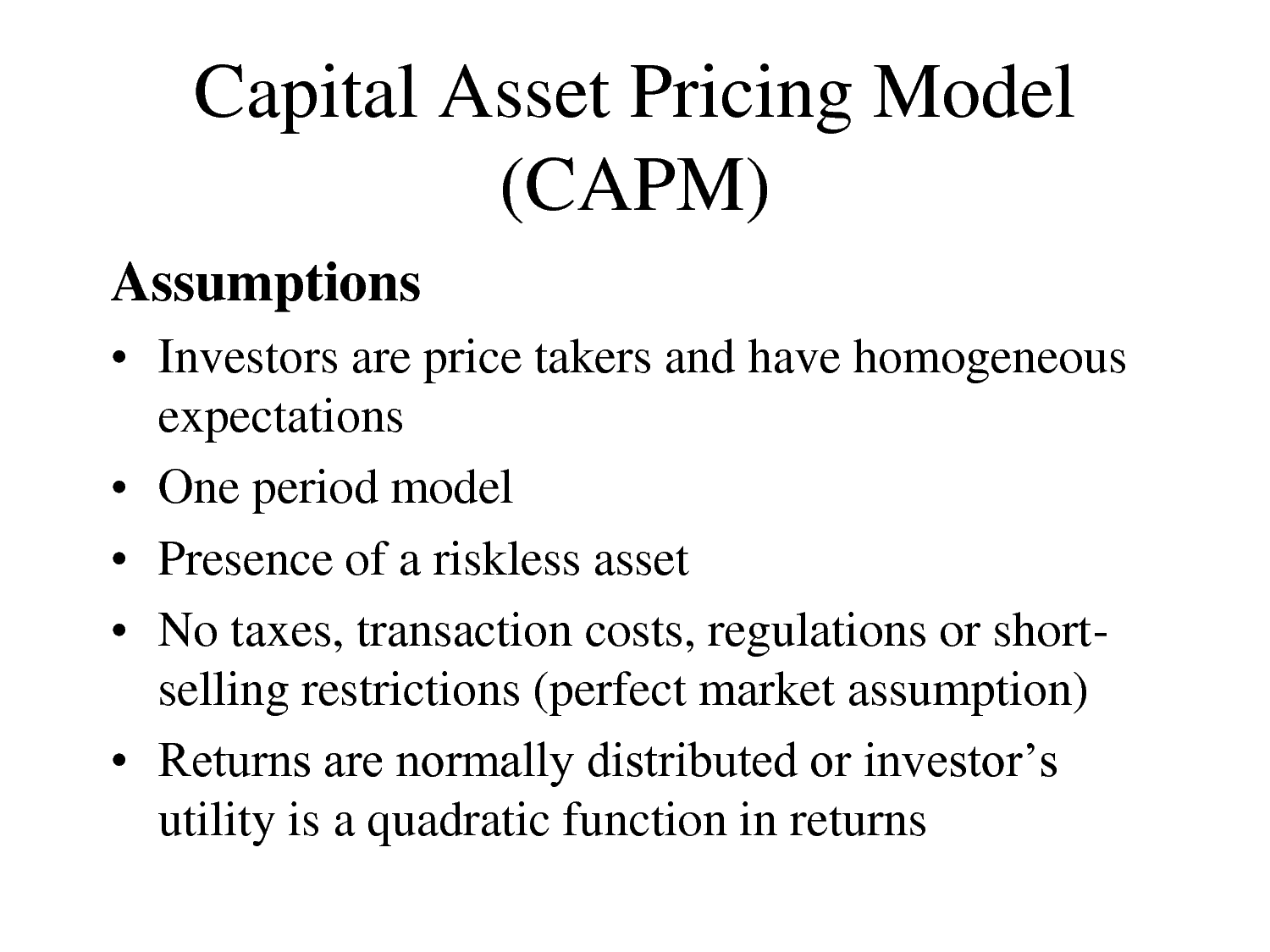How to calculate cost of common stock using capm
In capital budgeting , corporate accountants and finance analysts often use the capital asset pricing model , or CAPM, to estimate the cost of shareholder equity. The CAPM formula requires only three pieces of information: The rate of return refers to the returns generated by the market in which the company's stock is traded.
The beta of the stock refers to the risk level of the individual security relative to the wider marker. A beta value of 1 indicates the stock moves in tandem with the market. A higher beta indicates a more volatile stock and a lower beta reflects greater stability. The risk-free rate is generally defined as the rate of return on short-term U.
Computerized Investing
Treasury bills , or T-bills, because the value of this type of security is extremely stable and return is backed by the U. Numerous online calculators can determine the CAPM cost of equity, but calculating the formula by hand or in Microsoft Excel is simple. The company's stock is slightly more volatile than the market, with a beta of 1.

The risk-free rate based on the three-month T-bill is 4. Based on this information, the cost of the company's equity financing is 4.
Personal Finance - How To Information | eHow
The cost of equity is an integral part of the weighted average cost of capital , or WACC , which is widely used to determine the total anticipated cost of all capital under different financing plans. Dictionary Term Of The Day. A measure of what it costs an investment company to operate a mutual fund. Latest Videos PeerStreet Offers New Way to Bet on Housing New to Buying Bitcoin?
This Mistake Could Cost You Guides Stock Basics Economics Basics Options Basics Exam Prep Series 7 Exam CFA Level 1 Series 65 Exam. Sophisticated content for financial advisors around investment strategies, industry trends, and advisor education.
How do I use the CAPM capital asset pricing model to determine the cost of equity? By Claire Boyte-White February 25, — 8: Learn about the capital asset pricing model, or CAPM, and how this formula is used to determine the expected rate of return Learn how to calculate the cost of equity in Microsoft Excel using the capital asset pricing model, or CAPM, including brief Find out how market risk directly affects the total cost of capital, including how to use the capital asset pricing model Learn about the drawbacks of using the equity risk premium to evaluate a stock, and understand how it is calculated using Learn about the relationship between the risk-free rate of return and the equity risk premium, and understand how the risk-free Learn how beta is used to measure risk versus the stock market, and understand how it is calculated and used in the capital CAPM helps you determine what return you deserve for putting your money at risk.
CAPM, while criticized for its unrealistic assumptions, provides a more useful outcome than either the DDM or WACC in many situations. Learn how the bet against beta strategy is used by a large hedge fund to profit from a pricing anomaly in the stock market caused by high stock prices.
Weighted-Average Cost of Capital (WACC)
Despite several drawbacks, the CAPM gives an overview of the level of return that investors should expect for bearing only systematic risk. Applying Apple, we get annual expected return of about Both project the expected rate of return given the level of risk assumed, but they consider different variables. Beta says something about price risk, but how much does it say about fundamental risk factors?
Does the Capital Asset Pricing Model Work?
CAPM is a model that describes the relationship between risk and expected return. A model that describes the relationship between risk and expected Better known as "global beta", international beta is a measure An expense ratio is determined through an annual A hybrid of debt and equity financing that is typically used to finance the expansion of existing companies.
A period of time in which all factors of production and costs are variable. In the long run, firms are able to adjust all A legal agreement created by the courts between two parties who did not have a previous obligation to each other. A macroeconomic theory to explain the cause-and-effect relationship between rising wages and rising prices, or inflation.
A statistical technique used to measure and quantify the level of financial risk within a firm or investment portfolio over Content Library Articles Terms Videos Guides Slideshows FAQs Calculators Chart Advisor Stock Analysis Stock Simulator FXtrader Exam Prep Quizzer Net Worth Calculator.
Work With Investopedia About Us Advertise With Us Write For Us Contact Us Careers.

Get Free Newsletters Newsletters. All Rights Reserved Terms Of Use Privacy Policy.
